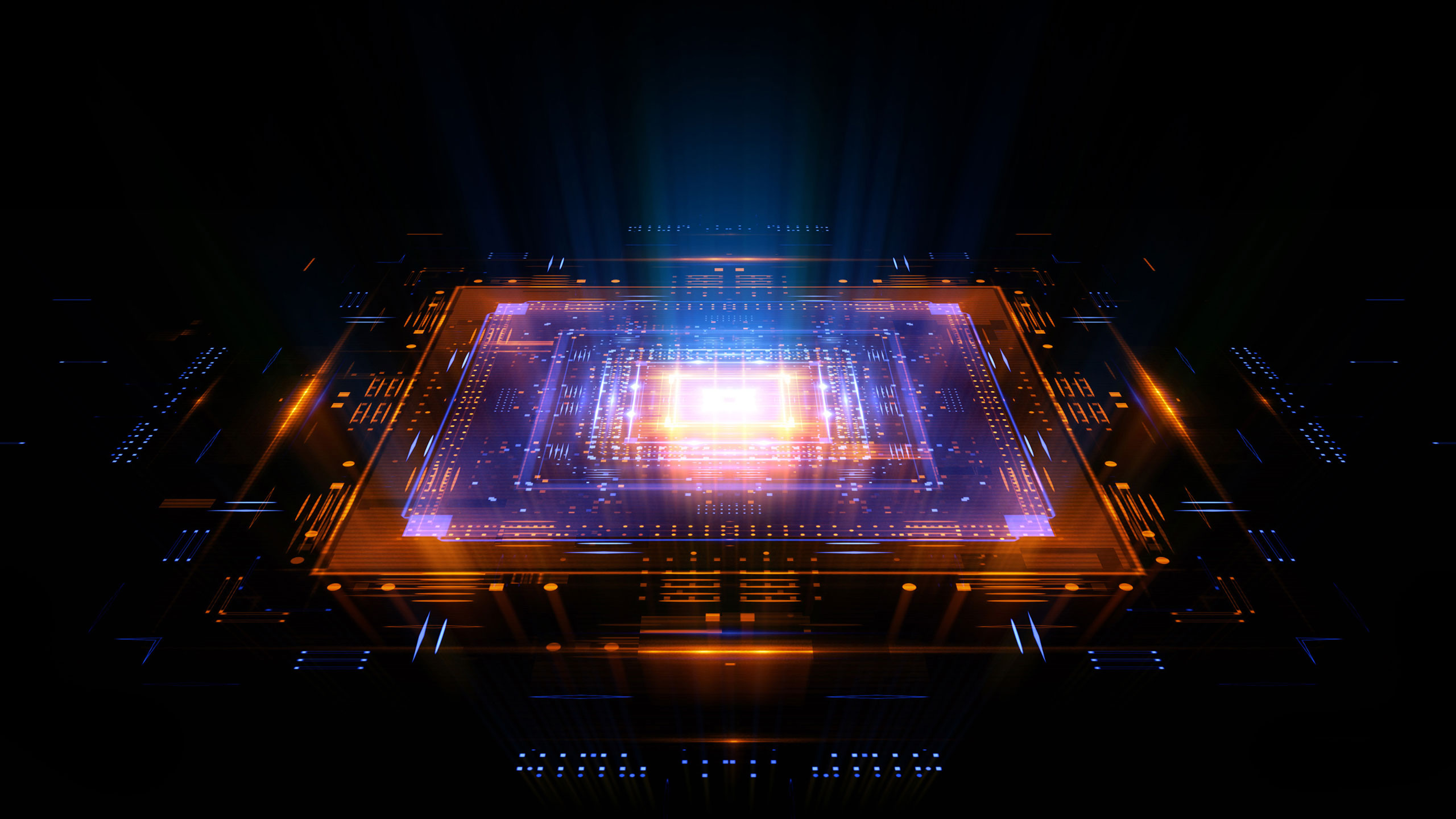Intel Gen12 Xe Graphics Leads AMD's Vega in Integrated GPU Performance

If the latest Time Spy benchmarks (via @TUM_APISAK) are accurate, Intel might have finally surpassed AMD in the integrated graphics department. The Core i7-1165G7, which features Intel Xe Graphics (aka, Gen12), has once again outperformed the Vega iGPU from the Ryzen 4000-series (codename Renoir) APUs. This time, instead of 3DMark 11, the battleground is the newer and far more demanding 3DMark Time Spy DirectX 12 benchmark.
The composition of the Gen12 graphics processing unit inside the Core i7-1165G7 remains a bit of a mystery for now, but Tiger Lake submissions from last year suggest it will feature 96 Execution Units (EUs). That's a 50% upgrade over Ice Lake's Gen11 graphics solution, and potentially gives Gen12 graphics 768 shading units. The Tiger Lake-U family will reportedly be comprised of 15W and 28W models. For the time being, we can't say for certain if the Core i7-1165G7 has a 15W or 28W TDP. By comparison, the 35W Ryzen 9 4900HS and 15W Ryzen 7 4800U each have eight Vega Compute Units (CUs), or 512 shader cores, running at clock speeds up to 1,750 MHz.
The Core i7-1165G7 scored 1,338 points in the graphics test, while the Ryzen 9 4900HS and Ryzen 7 4800U put up scores of 1,282 and 1,237 points, respectively. That means Intel's Gen12 Xe Graphics delivered up to 4.4% higher performance than the eight Vega CUs inside the Ryzen 9 4900HS. It's not a massive victory, but it's still a win. It remains to be seen how Gen12 performs outside of synthetic benchmarks because synthetic performance doesn't always translate over to real-world performance.
| Processor | Cores / Threads | Base / Boost Clock (GHz) | TDP (W) | Graphics Score | CPU Score |
|---|---|---|---|---|---|
| Core i7-1165G7* | 4 / 8 | 2.8 / 4.7 | ? | 1,338 | 4,679 |
| Ryzen 9 4900HS | 8 / 16 | 3.0 / 4.3 | 35 | 1,282 | 7,511 |
| Ryzen 7 4800U | 8 / 16 | 1.8 / 4.2 | 15 | 1,237 | 7,115 |
*Specifications are unconfirmed.
There weren't any shocking developments on the processing side. The Core i7-1165G7 is clearly the underdog in that department. The 10nm Tiger Lake-U chip only has four cores and eight threads at its service while the 7nm Ryzen offerings boast double the cores and threads. That allowed for the 15W Ryzen 7 4800U to outperform the Core i7-1165G7 by up to 52.1% in the processor test, with the 35W Ryzen 9 4900HS tacking on an additional 8.4%.
AMD's Ryzen 4000-series APUs use the Zen 2 microarchitecture and 7nm process node, but the GPU inside the chips stills ticks with the old Vega microarchitecture. Vega was a worthy rival for Intel's Gen11 Graphics, but Renior APUs have trimmed the number of GPU cores while Intel has gone the other direction and added more GPU performance. AMD may have gotten too complacent, after leading in the graphics war over Intel for a long time. Now, Intel has seemingly caught up to and even edged past Vega with Gen12 Xe Graphics.
AMD still has a potential trump card up his sleeve: Navi. However, unless AMD wants to retake the iGPU crown, we don't expect to see Navi in an APU at least for another generation (i.e., Ryzen 5000 APUs). In the meantime, roles have switched with Intel potentially delivering a more powerful iGPU with a slower CPU, and AMD holding the mobile CPU performance crown. We'll have to see how the two solutions stack up in a more comprehensive integrated graphics performance showdown once Tiger Lake launches.
Get Tom's Hardware's best news and in-depth reviews, straight to your inbox.

Zhiye Liu is a news editor, memory reviewer, and SSD tester at Tom’s Hardware. Although he loves everything that’s hardware, he has a soft spot for CPUs, GPUs, and RAM.
-
mikewinddale I think AMD still overall wins here.Reply
The AMD is only barely slower in graphics but massively faster in CPU. So overall, the AMD is faster.
Furthermore, it's easier to upgrade a graphics card than a CPU. Mechanically, adding a graphics card is easier than removing and replacing a CPU and its heatsink. Also, in terms of future compatibility, pretty much any PCIe x16 card in the future will be a suitable upgrade, while CPUs are much more limited.
So if I were going for the overall fastest system with the most flexible upgrade path, with the fewest compromises, I'd still go with AMD. -
cyrusfox Reply
Neither one is upgradeable, these are both SOC mobile chips...mikewinddale said:I think AMD still overall wins here.
The AMD is only barely slower in graphics but massively faster in CPU. So overall, the AMD is faster.
Furthermore, it's easier to upgrade a graphics card than a CPU. Mechanically, adding a graphics card is easier than removing and replacing a CPU and its heatsink. Also, in terms of future compatibility, pretty much any PCIe x16 card in the future will be a suitable upgrade, while CPUs are much more limited.
So if I were going for the overall fastest system with the most flexible upgrade path, with the fewest compromises, I'd still go with AMD.
You could potentially augement with a discrete GPU on either, but you will still need heat pipes to it to cool.
It is exciting to see 8 cores on a laptop chip, I am not convinced it is overkill, but having 8 core cpu with only integrated GPU, a little bit of an unbalanced match up. We will see how the market responds to AMD Ryzen 4000 mobile offerings. -
davis mc CPU is designed to handle a wide-range of tasks quickly (as measured by CPU clock speed), but are limited in the concurrency of tasks that can be running. A GPU is designed to quickly render high-resolution images and video concurrently. We all need images/ video (GPU) so INTC wins over AMD.Reply -
JayNor Is there confirmation for an 8 core tiger lake h? Seems like that would be a more appropriate chip for the comparison.Reply
"Then there's the high-performance Tiger Lake-H lineup that would consist of up to 8 core and 16 thread chips based on the new Willow Cove architecture. The CPUs would carry up to 34 MB of cache that's 24 MB L3 (3 MB L3 per core) and 10 MB L2 (1.25 MB per core)."
https://wccftech.com/intel-11th-gen-tiger-lake-cpus-launch-mid-2020-ice-lake-sp-xeon-sampling-now/ -
ChaosFenix So I don't think AMD has much to fear here.Reply
1. They are running on an older GCN architecture that will hopefully be replaced soon with RDNA or even RDNA 2 which each generation will be providing 50% increase in perf/watt per generation. So you are comparing Intel's latest graphics capabilities with something that while good is couple generations behind at this point.
2.Intel is using 50% more shaders here to eek out a 5% win. From the sounds of it AMD adding a single CU would give it a 12% boost and take the crown back. If they matched Intel on shaders they would be winning by about 40%.
3. We have no numbers on power consumption which matters a lot in this segment. Intel could be running this thing at 12W which would make this more impressive or it could be running it here at 25W which would make this a non issue. Until we know like for like this just isn't much to go off.
I am not saying that AMD can rest easy here as that is what got Intel into trouble but AMD already has things in its roadmap that will make this a non issue by the time it actually launches. If they brought it back up to 10-11CUs like the 3700u or 3400G, and put in RDNA next gen they would easilly be beating it by ~70%. If they could put in RDNA2 could could expect 2x+. I actually would love to see something like a Ryzen 9 5900u with 8c16t and 11CUs using RDNA2 at 1600Mhz+. You could do some decent AAA gaming with that. -
JayNor Replymikewinddale said:
The AMD is only barely slower in graphics but massively faster in CPU. So overall, the AMD is faster.
The cpu performance looks pretty good for 4 Willow Cove cores. Article in wccftech says a Tiger Lake H with 8 cores is in the works. Looking forward to that... -
gruffi Actually both scores, CPU and GPU, look quite underwhelming. But this also depends on the actual clocks and power consumption. Ryzen 3100 with 4C/8T and much lower boost clocks scores ~5000 CPU. Sure, this is a 65W desktop part. But it could easily fit into 15W with Vega8 if designed as mobile processor. Leave alone mobile Zen 3 that will probably be launched 1H next year.Reply
And just ~4% more GPU performance than the old Vega? This is no real progress for Intel. Two problems. First, Renoir never was designed to break iGPU records. AMD took Vega because it was cheap to integrate and enabled 8 powerful Zen 2 cores within 15W. RDNA 2 based mobile processors will offer a complete different level of performance. And second, Intel never looked that bad in synthetic benchmarks. But real world performance often is much worse. I guess that 4% advantage in Time Spy turn into 10-20% disadvantage in real games. -
deksman Replymikewinddale said:I think AMD still overall wins here.
The AMD is only barely slower in graphics but massively faster in CPU. So overall, the AMD is faster.
Furthermore, it's easier to upgrade a graphics card than a CPU. Mechanically, adding a graphics card is easier than removing and replacing a CPU and its heatsink. Also, in terms of future compatibility, pretty much any PCIe x16 card in the future will be a suitable upgrade, while CPUs are much more limited.
So if I were going for the overall fastest system with the most flexible upgrade path, with the fewest compromises, I'd still go with AMD.
Historically also Intel may have had certain benchmark scores, but those were not reflected in actual gaming (software which uses graphics in general) software, and AMD was consistently faster.
Even with 4.4% lead on Intel's end, that's just above margin of error, and I suspect AMD would STILL come out faster in actual games (but we'll see).
Although yes, I agree with the sentiment that AMD is faster (and a much better offering) overall.
Plus, with the article claiming the tides have somehow turned and AMD offering more powerful CPU and weaker GPU doesn't exactly hold ground since Intel iGP's have been lagging behind AMD's iGP's by 30% or more... the difference here is 4.4% in Intel favor (and we don't know if this will even be reflected in actual games).